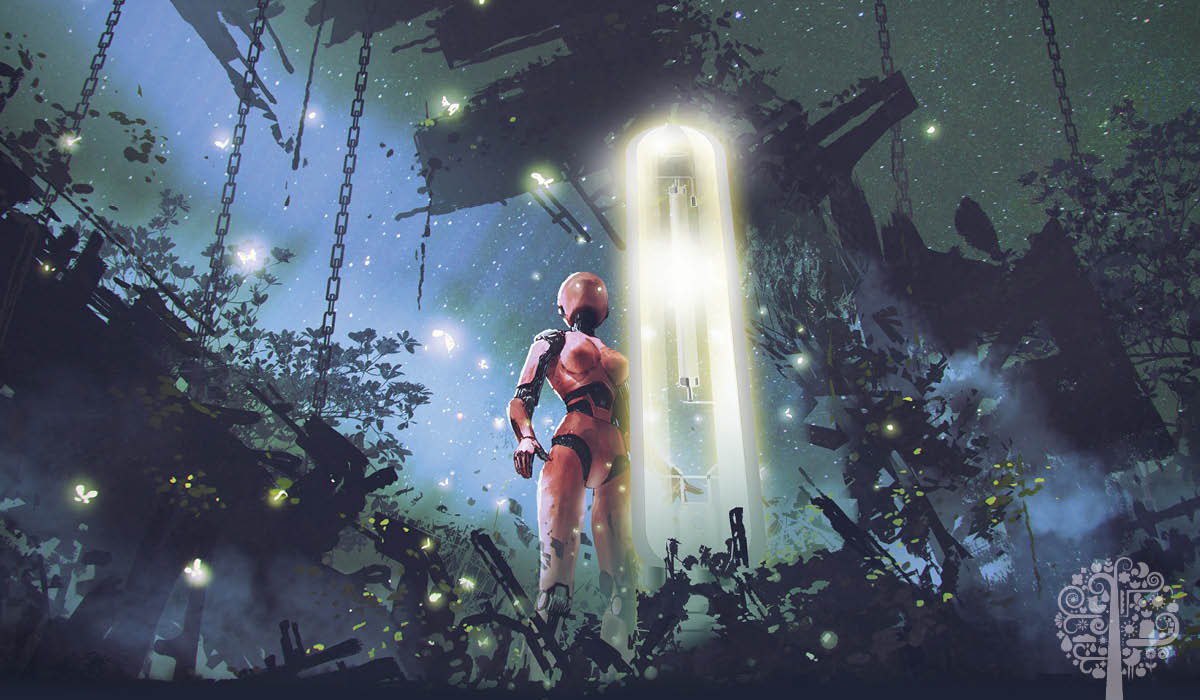Long ago in a Trap House somewhere off I-70, Legacy Growers, striking from hidden basements, were winning their first battles against the Evil Imperialist (Didactic?) Empire.
During one of these battles, Legacy Spies managed to steal secret plans to the Empire’s ultimate weapon, the REC STAR, a bureaucratic force with enough power to destroy an entire culture.
Pursued by the Empire’s sinister agents, Princess Manna races home aboard the Mothership, custodian of the stolen plans that can save her people and restore healing to the masses.
New School Hope
Anyone growing around the turn of the century knows the old standard saber, the single-ended High-Pressure Sodium (HPS). The weapon of choice was the 1000W in the US and the 600W abroad (more is better here in the States). All kinds of ducted hoods and reflectors to remove heat (hopefully in a discrete way that didn’t emit a thermal signature for the Empire to lock a tractor beam on) and distribute the light uniformly on the 2-dimensional plane that was your flowering canopy. This is how we achieved optimal yields in discrete, underground dens—layering the light from 1, 4, 12, or even 20 of these fixtures in a room as evenly as possible from these point source plasma bombs.

All the old-timers remember the practice of “Super Cropping”, Low-Stress Training(LST), and other forms of canopy management that were the grow store lore in the early to mid-2000s. Basements have low ceilings; online forums had some low bars for actual science. This is, however, intuitively poignant when the conditions were what they were (and remain in many places). With only a few feet of clearance, it is essential to micro-manage every aspect of the growth of your plants to get the best and clearest path from your light source to your flower sites.
Theory vs Reality
Low efficiency, high heat, and limited contribution lighting justify this practice. To hit that magic benchmark of “1000 micromoles” of PPFD on your canopy, this was the way to do it. The theory is that the intentional stress to the plants elicits a positive response in the form of secondary metabolites. The reality is that you were just getting the most out of your limited fixtures. The net intensity from the lights (700-1000mmol) generates the potency, not the stress response. In ten years of commercial production, metabolite benchmarks have doubled, and few if any growers will go through a 100-light room to bend and caress every plant into submission to get a “thank you sir” from the biological beauties under their synthetic stars.
A quick search for the term “super cropping” still dredges up artifacts of Bro-Science that perpetuate to this day. This counterpoint to the term wasn’t true to me either until I saw my first room full of double-ended HPS, mounted 4 feet from the canopy of a room, turning out 2-3 pounds per light. Old basement rooms with manicured canopies would serve up 12 inches of baseball bats, and the rest was diminishing, whispy LARF to the bottom of the tropic zone. On top of that, the “canopy readings” of intensity were 750-850 mmol on average under these galaxies of high(er) efficiency HPS fixtures. How was this possible?
Now, well-pruned (not pinched) and defoliated (per your Grower’s SOPs) rooms will deliver canopies of A-grade 30 inches or deeper.
When double-ended fixtures started “falling off the back of trucks” on their way to commercial greenhouses and landing in warehouses of Legacy Forces, they realized the power of these fixtures was in larger arrays. The improved total output and efficiency turned into profits simply because of the light coming out of the fixtures. There was no longer a need to prune your garden like a boxwood. Let them grow tall and selectively prune the canopy of shading leaves at a few points of maturation, and the yields would improve without giving them PTSD.
Probing Photosynthetic Photon Flux Density
PPFD, as it’s known now to so many gardeners, is the standard measurement of the amount of light measured “at canopy” level using a handheld meter like an Apogee sensor or the research standard Li-Cor 250A. The practice of indoor cultivation has evolved from gathering hydro shop pointers from your resident Wook selling the spider mite treatment du jour to the New School of Tyvek suits, Crop Steering, and SOP’s. We must modernize our understanding of lighting in the indoor garden.
The private sector of Controlled Environmental Agriculture is setting new theoretical maximums for research on plant physiology.
Growers are making more informed decisions while still pushing the envelope of what should be possible. They can now command up to and exceed 2000 micromoles of PPFD on canopy for sustained periods in artificial growing environments and see a return on the investment with yields above 120 grams per square foot of sellable product. This has been shown in tandem with some of the best Legacy Growers and Scientists on the task. Enabled by LED-based technology since the infrared heat from the old cutlass will no longer physically fry the plants underneath the dialed, diode-based transmission of refined PAR. We are looking more at DLI (Daily Light Integral) and agronomic terms rather than the limited metrics imposed by the old Death Stars. This has been achieved by several arm-ripping hippies of the Legacy Force who could not be told “NO”. Seeing is believing, and these furry savants are doing what, until recently, could not be done.

Most of the terminology used to define lighting for indoor gardens is extrapolated from “visual” perception by people, i.e. Inverse Square Law, lux, and lumens(are for humans).
If you light a candle and walk incremental distances away from it, the candle will get dimmer and dimmer (albeit visible from a very long way away). But this doesn’t mean the candle is putting out any less light; it is just a measurement of how our eyes and brains quantify the light. Humans and plants perceive an uncanny evolutionary slice of the electromagnetic spectrum (400-700nm), with human perception peaking around 535nm, aka green. This is how lighting design software like DiaLux and AGI 32 can adapt to horticultural layouts through some keen conversion factors. This is a limited interpretation. Layouts and design are still an integral part of approximation, even if they are based on a quantitative parallel. PPFD, like lux levels, can be manipulated on a 2-dimensional surface using optics. But we know from the old online, multi-colored LEDs that touted “200 watts can replace a 1000W HPS” that 3000 mmol from a PAR meter did not equate to an equal yield from these old bastards of the early marketed technology.
We are dealing with a 3-dimensional canopy matrix and must use a Systems Engineering approach.
If you have a shotgun with a birdshot choke or a sawed-off and shoot each at the side of the barn from five paces away, one will blow a tight patterned hole, and the other will scatter the shot. It doesn’t change the amount of energy or lead shot in the shell. The rate of output is the same. This is known as Photosynthetic Photon Flux in horticultural lighting. Take the wattage(650) and multiply by the efficacy in mmol/Joule(2.7), and you’ll get the total rate of Photosynthetically Active Radiation emitted by this fixture (1755mmol). The total rate of inputs correlates to the successful realization of sellable units from any garden. DE fixtures upped the game with efficiencies at or above 2.0 mmol/J, while SE lamps were capped at around 1.6 at best. That is the difference of 2100 usable photons versus 1680; 20% more light from the same wattage. LEDs now surpass 2.7 mmol/J for “white” or broad-spectrum and more than 3.4 for “blurple” or targeted Red: Blue spectra. Without the heat.
The Battle of Las Vegas
Visit any of the large industry shows now, and you will find a melting pot of Legacy Growers and Capitalists like nowhere else in the Universe. Wooks and Wingtips commingle in a cabalistic, social media-induced arena.
Many Growers have transitioned from forums to their feeds for information. The hype of overstated claims, flagrant false advertising, memes, social commentary, and subliminal marketing is producing some unintended and just results. While it is the new pipeline for information and can be full of horse shit every day, some internet sleuths and budding scientists are making their marks. Recent battles have begun, and cancel culture is alive and well in the indoor Horticulture market where BS is being called to the public for brands peddling their modified truths.

There is a cult of truth-seekers not falling for the mind tricks. Some tenured scientists and fresh Master’s candidates are out there providing and accepting feedback in live time. Peer-Reviewed Journals are now publishing on our favorite crops, and the masses have spoken loud enough to force companies to clean up their acts. This transdisciplinary and integrative approach to information intake is essential to getting your garden dialed into the 21st century and beyond.
Spaghetti Western of Science
The battle for Truth rages on and the feedback cycle from the Dark Side to the Light is in motion. Technology initially funded by NASA has been applied to counter-culture crops, and now science is picking up the pieces of innovation, driven by this unparalleled boom. Any chronicle is in a constant state of flux and the horticultural story is brimming with paradigm-shifting potential.